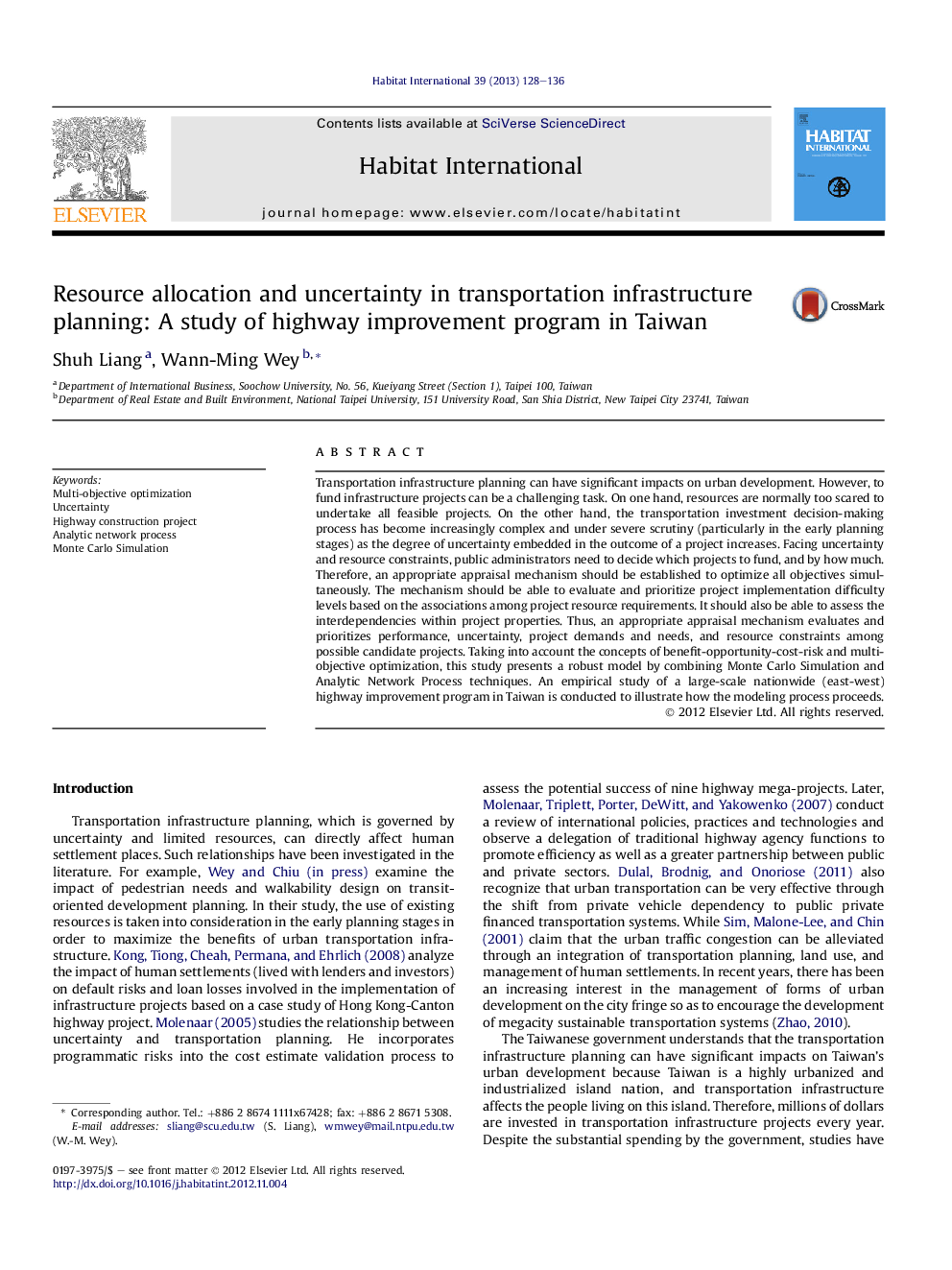| کد مقاله | کد نشریه | سال انتشار | مقاله انگلیسی | نسخه تمام متن |
|---|---|---|---|---|
| 1048231 | 1484503 | 2013 | 9 صفحه PDF | دانلود رایگان |

Transportation infrastructure planning can have significant impacts on urban development. However, to fund infrastructure projects can be a challenging task. On one hand, resources are normally too scared to undertake all feasible projects. On the other hand, the transportation investment decision-making process has become increasingly complex and under severe scrutiny (particularly in the early planning stages) as the degree of uncertainty embedded in the outcome of a project increases. Facing uncertainty and resource constraints, public administrators need to decide which projects to fund, and by how much. Therefore, an appropriate appraisal mechanism should be established to optimize all objectives simultaneously. The mechanism should be able to evaluate and prioritize project implementation difficulty levels based on the associations among project resource requirements. It should also be able to assess the interdependencies within project properties. Thus, an appropriate appraisal mechanism evaluates and prioritizes performance, uncertainty, project demands and needs, and resource constraints among possible candidate projects. Taking into account the concepts of benefit-opportunity-cost-risk and multi-objective optimization, this study presents a robust model by combining Monte Carlo Simulation and Analytic Network Process techniques. An empirical study of a large-scale nationwide (east-west) highway improvement program in Taiwan is conducted to illustrate how the modeling process proceeds.
► Transportation infrastructure planning can directly affect urban development.
► Public administrators need to maximize the return on transportation investments.
► We apply benefit-opportunity-cost-risk and optimization to select feasible projects.
► We specify project budget based on resource allocation efficiency.
► All projects are funded in five years, as opposed to the usual eight or ten.
Journal: Habitat International - Volume 39, July 2013, Pages 128–136